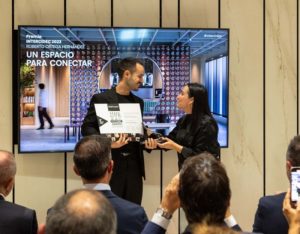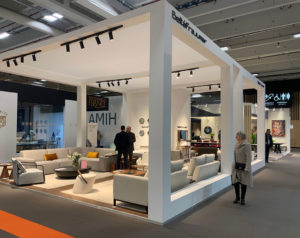What inspired you to create the Ólia table design?
More than an inspiration, the Ólia table design has been the result of working with very well defined premises prior to his ideation, such as his function and the environment where it would have to live.
What does the design of the Ólia table aim to convey?
It was like setting a challenge in a piece of furniture, I wanted it to be able to transmit sensations as if it were a piece of jewellery, because of the shape and materials used in its development.
To what extent does your personality influence the play?
I try not to let my designs be influenced by my personality, based on the fact that each design is different and is worked with data and premises that are very different from one another. Each design, therefore, has its own keys when working on it.
What is the best and worst thing about being a designer?
The designer has the possibility to improve and create objects that facilitate the people life, and that is something very satisfactory, as well as to be able to transmit emotions and satisfactory sensations with your designs, it allows you to solve problems of all kinds: mobility, communication, planning, etc.
The worst thing as a designer is that you realize that there are many things to improve, but few companies are willing to change them.
If you look back, how does the actual Vicente Gallega differ from the young designer of its beginnings?
I usually don’t look back, but just the opposite. I’m sure I’ve changed in some ways, you could say that about the topic of experience. But there is something I can confirm that has not suffered any change, and it is the illusion with which I face each of the new projects that come to the studio.
What is the biggest challenge you have faced in your career?
To many, continuously since I discovered this profession, at the age of 15. Every new project is a challenge, even though it may seem simple inside, it keeps the complexity, that’s why how to approach and work the design processes is so important. Let’s not forget that the big challenge is to connect with the people who use our designs, regardless of one country or another.
What advice would you give to young designers who are starting their careers?
Above all, they should be honest with the materials and objects they are going to design, always focusing on the people who are going to use them, in order to solve some functional or aesthetic need.
Any design you’re particularly fond of?
It is not easy to name specific designs, as all work is done with the utmost care, each with its own personality and according to its characteristics and type of use.
Since my first work in 1982 with the Mlo bed, Ondas… Since then there have been many works of which I keep very good memories, and of course the most recent designs such as the Tamo armchair, Níes or the Ólia table, of which I am especially satisfied.
What does a design have to have to captivate you?
To be honest and capable of transmitting emotions.
If you had to choose 5 designs from our website… Which ones would you choose?
I could say many, but I will stick to the Ólia table, the Tamo armchair, the Níes chair, the Domo table and the Tempo collection.






